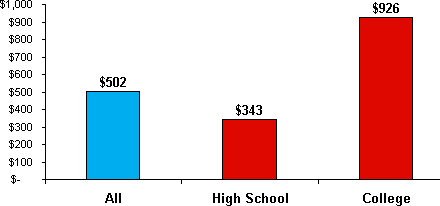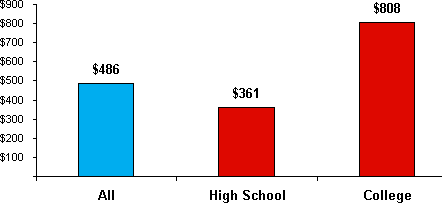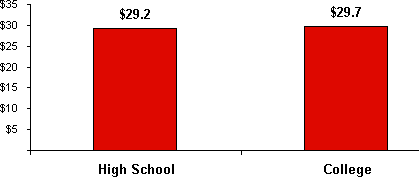IDEX Online Research: Consumer Jewelry Expenditures by Educational Level - Better-Educated Consumers Spend More on Jewelry
August 21, 07
Sy Syms, the menswear retailer, popularized the expression that “an educated consumer is our best customer.” That is also true, in a different sense, for jewelers. When it comes to jewelry expenditures, consumers spend in direct proportion to their educational level: the highest and best-educated consumers spend the most on jewelry.
Consumers with a college education spend more than two-and-a-half times more on jewelry than a consumer with only a high school graduate. Consumers with a post-graduate degree (for example, a Ph.D.) spend triple the amount on jewelry versus a high school graduate.
The disparity is even greater when comparing the highest-spending consumers (post-graduate degrees) versus a consumer who did not complete high school: the best-educated consumers’ jewelry spending was nearly twelve times as much in a year as the jewelry spending of a high school dropout.
Occupation and income explain some of this spending disparity, but not all of it. For example, households where shoppers have post-graduate degrees earn three-and-a-half times as much as a high-school dropout, but their jewelry expenditures are dramatically greater – nearly twelve times as much, as noted.
The following graph summarizes spending by education level for U.S. consumers.
| Annual Household Spending |
When jewelry expenditures by educational level for 2005 are compared to those for 2004, it is clear that the spending disparity widened. While high school grads spent about $343 per household on jewelry in 2005, they spent about $361 per household in 2004. The graph below summarizes jewelry expenditures by educational level for 2004.
| Annual Household Spending |
Market Size of High School Grads Is Surprising
Many jewelers use total market spending potential, rather than spending per household, as a way to measure market potential. The theory is simple: spending per household may be high, but if there aren’t many households, there isn’t much of a market.
When it comes to educational levels, the aggregate market size of high school educated consumers is nearly as large as the aggregate market size for college-educated consumers. Why is this? There are about 85.3 million households with only a high school education, but there are about 32.1 million households with a college degree. While the spending per household of high school educated consumers is not large, they wield huge buying power as a group.
| Total Annual Jewelry Consumption |


